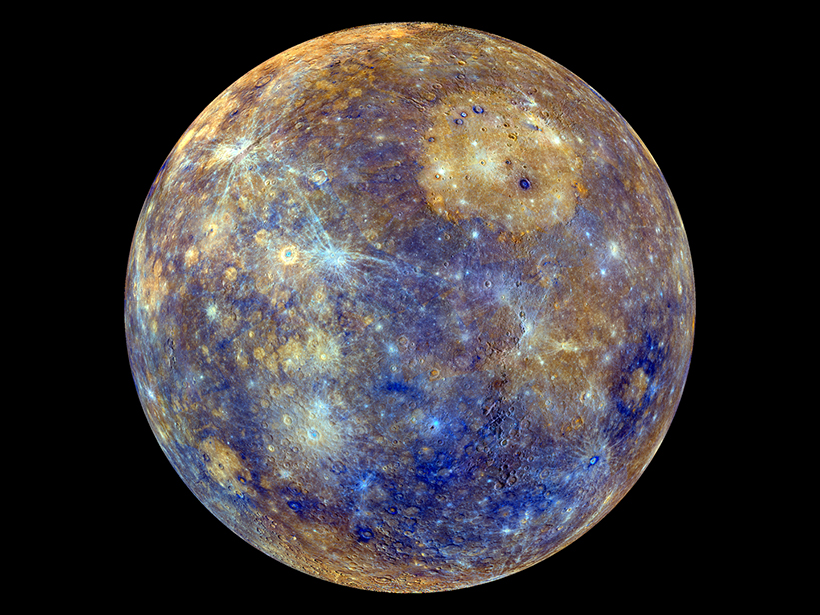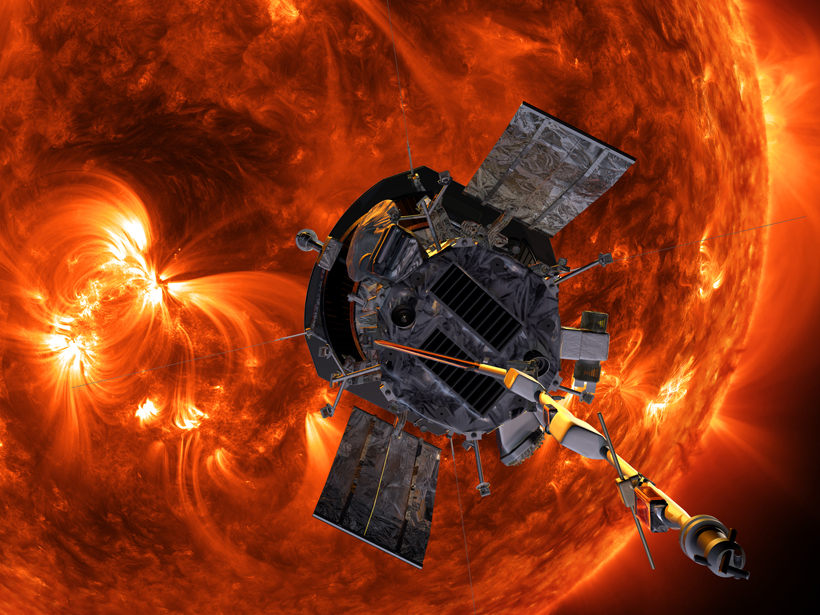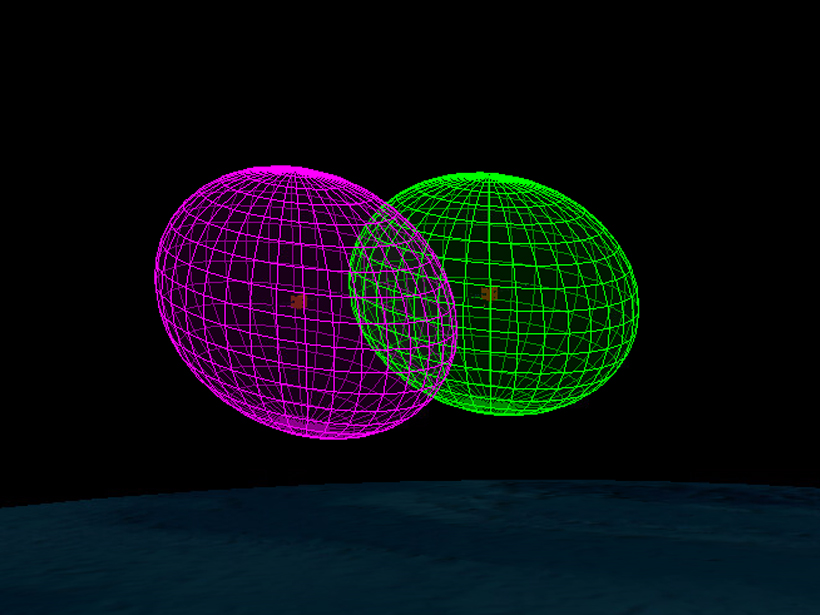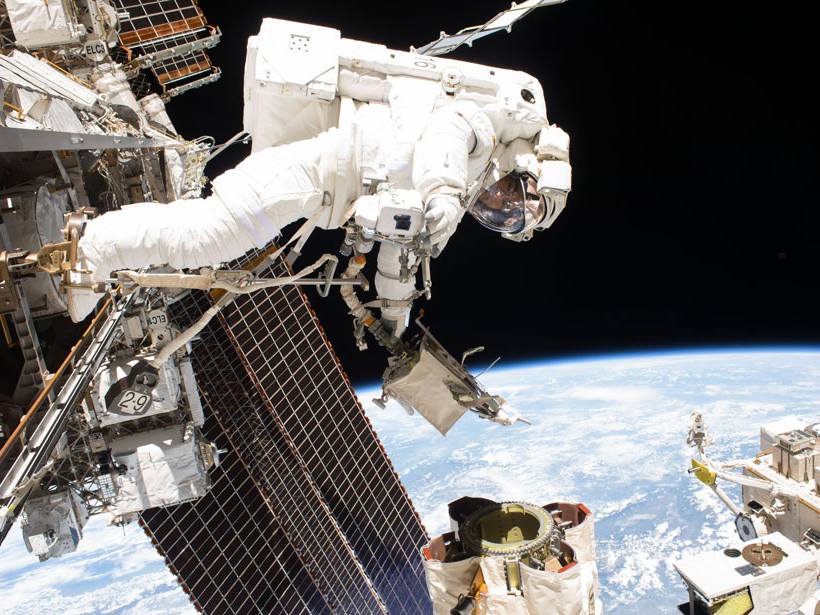A new study finds that Phobos includes chunks of Martian crust.
spacecraft
Future Mars Rover Named for DNA Pioneer Rosalind Franklin
The rover will explore a once water rich region on Mars’s surface and search for evidence of current and past life.
Lander Gives First Look at Moon’s Farside
The mission aims to explore this relatively unstudied hemisphere and learn about its age, composition, and geologic history.
Martian Crater Will Be the Landing Site for a Future Rover
The impact crater is a dry lake bed that contains evidence of ancient water flows and perhaps signs of ancient microbial life.
Mercury Mission Will Map Morphology and Measure Magnetics
BepiColombo may launch as early as this weekend. It seeks to unravel the mysteries of Mercury’s geologic and magnetic past and map the small planet’s cratered surface.
First Spacecraft to Touch the Sun Awaiting Launch
The Parker Solar Probe will study the Sun’s corona and its electric and magnetic fields, as well as the mechanisms that drive the solar wind, all from behind an advanced protective heat shield.
Predicting and Avoiding Collisions in Space
Solar wind drivers affecting the satellite environment have about a one hour predictive horizon, but solar wind speed periodicities and ensemble modeling can extend the forecast interval.
Senators Oppose Cutting Federal Funding for Space Station
Senators Ted Cruz and Bill Nelson say a timetable to transition the station to commercial operations in 2025 is premature, arbitrary, and political.
New Lander en Route to Probe the Red Planet’s Interior
The Mars InSight mission aims to answer key planetary science questions about seismicity, meteorite impacts, and the formation of rocky planets.
Evidence of Extensive Ice Deposits Near Mercury’s South Pole
New radar observations and refined illumination maps reveal uneven water ice deposits twice the size of those found around the planet’s north pole, suggesting the source may be a recent comet impact.










